Have you ever wondered how geologists get to know if a volcano is about to erupt or not or whether a building is about to fall or not? Well, all of this is measured using a geotechnical monitoring instrument known as tiltmeters.
Here we will explain more about tiltmeters and beam sensors along with their different types and how they are used in the field of geotechnical monitoring.
What Are the Different Types of Tiltmeters?
Encardio Rite deals with some of the most reliable, portable, low-cost, robust, and precisely-made tiltmeter sensors. The varied Models of tiltmeter include:
- EL Tiltmeter & EL Beam Sensor
- Tiltmeter with automatic data logger
- Box-type Tiltmeter with SDI-12 Interface
- MEMS Beam Sensor (MEMS)
- Box-type tiltmeter with MEMS Beam Sensor (MEMS)
- Portable Tiltmeter (MEMS)Uniaxial/Biaxial Tiltmeter (MEMS)
- Wireless Tiltmeter (MEMS)
Let us now discuss all the types of tiltmeters in detail with their construction, as well as operating principles.
EL Tiltmeter & EL Beam Sensor
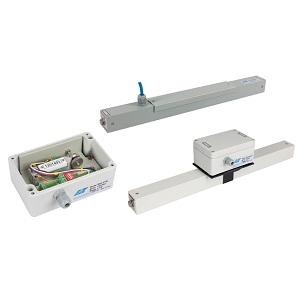 EL Tiltmeter & EL Beam Sensor
EL Tiltmeter & EL Beam SensorThe EL tiltmeters contain an electrolytic tilt sensor housed in a compact, rugged, and weatherproof enclosure. Encardio Rite’s Model EAN-31EL EL tilt sensor is designed for measuring very small tilts, of the order of half a degree, with a high resolution.
It is used to monitor the rotation and deflection of structures such as buildings, retaining walls, etc. in a vertical plane. These are normally used as a stand-alone unit for measuring tilt.
There are two ways in which the tilt sensor is used to measure the amount of tilt. One of them is by directly attaching it to the structure using suitable mounting brackets or fixed to horizontal or vertical beams.
The Model EAN-31EL-B beam sensor consists of the Model EAN-30EL, electrolytic tilt sensor mounted on a beam of fixed gage length and suitable mounting hardware for securing the beams to the structure.
The beam sensors are commonly linked together to give a differential displacement profile. An array of linked beam sensors allows the vertical settlement profile along the array line to be determined.
The Model EAN-41EL-B tiltmeter is designed to monitor the inclination and vertical rotation of structures. It is a high-resolution tilt sensor and rugged in construction. The electrolytic tiltmeter is contained inside a 1, 2, or 3 m long beam. The Model EDI-53ELV read-out logger is used to read voltage output from the sensor. The output can also be monitored or recorded at any remote location by an automatic data acquisition system or automatic data loggers.
Tiltmeter with Automatic Data Logger
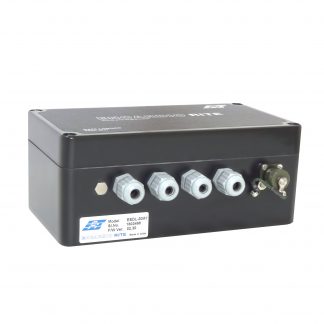 Tiltmeter with Automatic Data Logger
Tiltmeter with Automatic Data LoggerThe Model ESDL-30MT tiltmeter consists of a uniaxial or biaxial MEMS tilt sensor mounted inside an automatic SDI-12 digital interface data logger. It is a complete unit in itself that monitors tilt at any location.
The tiltmeter features a wide operating temperature range, dependable stand-alone operation, low power consumption, compatibility with many telecommunication options, and flexibility to support a variety of measurement and control applications.
All the measured data is stored together with the current date, time, battery voltage, and, a data record in the internal non-volatile memory of the data logger which is transferable to a remote server/PC through GSM/GPRS service.
Box-type Tiltmeter with SDI-12 Interface
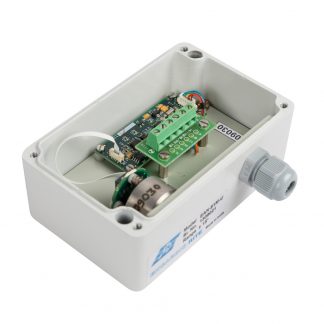 Box-type Tiltmeter with SDI-12 Interface
Box-type Tiltmeter with SDI-12 InterfaceThe Encardio Rite Model EAN-91M/EAN-93M box-type tiltmeters are suitable for monitoring minor changes in the inclination and vertical rotation of structures. The tiltmeters provide a relatively low-cost system that offers excellent resolution and long-term stability.
The Model EAN-91M/93M tiltmeter can be directly fixed on a wall/structure. One can also the EAN-91M tiltmeter to a beam of length 1 m, 2 m, and 3 m and use it as a beam sensor for monitoring differential movement and rotation in structures.
It is also used for monitoring the deflection and deformation of retaining walls. EAN-91M beam sensor can be mounted both vertically and horizontally. The individual beam sensors can be linked together to give a profile.
MEMS Beam Sensor [ MEMS Tiltmeter ]
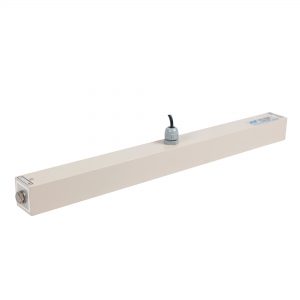 MEMS Beam Sensor
MEMS Beam SensorThe Encardio Rite Model EAN-41M/EAN-42M beam sensor consists of a MEMS (Micro-Electro-Mechanical System) sensor contained inside a beam of a specific length. It is installed on the structures for monitoring any differential movement or tilting of structures. MEMS Beam Sensor comes under MEMS Tiltmeter.
It can be mounted both vertically and horizontally and has long-term reliability. These beam sensors consist of a MEMS sensor housed inside the beam. Model EAN-42M comes with an SDI-12 digital interface such that all sensors can be connected through a single bus cable to the data logger.
The beam sensors are mounted in vertical strings for monitoring the deflection and deformation of retaining walls, sheet piling, etc. The beam sensor can also be installed in long horizontal strings to measure differential settlement along railway tracks, tunnels, pipelines, embankments, etc.
Data from the MEMS beam sensor provides early warning of threatening deformations, allowing time for corrective action to be taken.
Portable Tiltmeter [MEMS Tiltmeter]
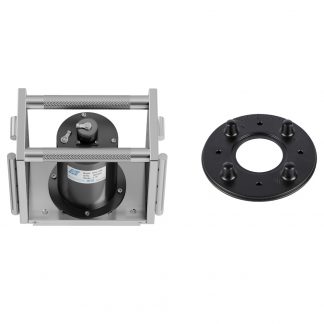 Portable Tiltmeter
Portable TiltmeterThe Encardio Rite Model EAN-70M portable Tiltmeter, also known as Portable MEMS Tiltmeter, is designed for monitoring changes in the inclination of any structure. It is a high-resolution tilt sensor using the inclinometer probes proven technology to function.
This tiltmeter is ruggedly built and possesses excellent temperature stability. Tilt changes in structures may occur due to construction activities such as excavation, tunneling, and dewatering that affect the ground supporting the structure.
The loading of a structure, such as the loading of a dam during impoundment, the loading of a diaphragm wall during excavation, or the loading of a bridge deck due to wind and traffic can also cause changes in tilt. Data from Model EAN-70M tiltmeter provides early warning of threatening deformation, allowing time for corrective action to be taken.
Uniaxial/Biaxial Tiltmeter [MEMS Tiltmeter]
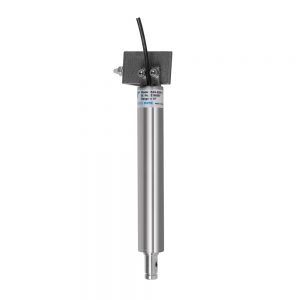 Uniaxial Biaxial Tiltmeter without SDI-12 Interface
Uniaxial Biaxial Tiltmeter without SDI-12 InterfaceThe Encardio Rite Model EAN-90M/92M tiltmeter is suitable for monitoring inclination and vertical rotation in structures. It is a high-resolution tiltmeter, sturdy in construction and with superior temperature stability.
The Model EAN-90M MEMS tiltmeter consists of a primary sensor, mounted inside stainless steel housing. The sensor output is 4 V nominal at ± 15°. This output can be carried over long distances without any signal degradation.
The sensor renders a comparatively low-cost system that offers an excellent resolution, long-term stability, and low thermal sensitivity. The tiltmeter (uniaxial and biaxial) is installed on a vertical or horizontal surface through an adjustable bracket and expandable anchor. Movement of the structure causes a shift in the tilt of the tiltmeter, which results in a difference in the output of the sensor.
Measurements can be made on horizontal or vertical surfaces. Subsequent sets of readings explain how the structure is behaving and indicate permanent deformations as time progresses.
The Model EAM-92M MEMS tiltmeter is available with an SDI-12 interface such that all sensors can be connected through a single bus cable to the data logger.
The SDI-12 bus cable from different tilt sensors can also be connected to the same data logger. Although the tiltmeter with SDI12 interface is a bit costlier, the savings in cable costs and the cost of the required multiplexers in the data logger reduce this to a larger extent.
Box-type Tiltmeter with MEMS Beam Sensor [MEMS Tiltmeter]
Box-type Tiltmeter with MEMS Beam Sensor
The Encardio Rite Model EAN-91M/EAN-93M box type MEMS tiltmeter and EAN-91MB/EAN-93M-B beam sensor are designed for monitoring minute changes in the inclination and vertical rotation of structures such as buildings, dams, bridges, tunnels, etc.
These tilt sensors consist of a box-type tiltmeter installed on a MEMS beam sensor (1, 2, or 3m long) respectively. This tiltmeter is used for monitoring of differential movement and rotation in structures. The beam sensors are also used for monitoring the deflection and deformation of retaining walls.
These can be mounted both vertically and horizontally. The individual beam sensors can be used in a linked form to give a profile.
Wireless Tiltmeter [MEMS Tiltmeter]
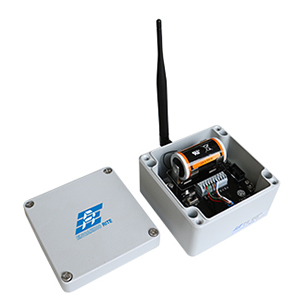 Wireless Tiltmeter
Wireless TiltmeterThe Encardio Rite Model EAN-95MW wireless MEMS tilt meter consists of a MEMS sensor with 4 V nominal outputs at ± 15°. This output can be transferred through a mesh wireless network over long distances without any signal degradation.
Every unit is individually calibrated to provide high system precision and repeatability. These tiltmeters are fixed onto a vertical or horizontal surface either directly using 4 mounting screws or fasteners or using a mounting kit that allows more flexibility in mounting the tiltmeter. Movement of the structure causes a change in the tilt of the tiltmeter, which results in a change in the output of the sensor.
Measurement can be made on horizontal or vertical surfaces. Subsequent sets of readings show how the structure is behaving and will indicate permanent deformation as time progresses.
Read more: Tiltmeter: How Does it Work, Installation, & How to Read
Advantages of Encardio Rite’s Tiltmeters
Encardio Rite’s Models of tilt sensors and beam sensors are some of the best in the industry because of the following impeccable features:
- The tiltmeter sensor and beam sensor provide reliable and high-resolution readings.
- The sensors are ruggedly built with robust weather-proof construction.
- The tiltmeter and beam sensor are easy to install as the tilt plate can be anchored to the structure or even bonded in case of a smooth surface.
- It’s quite easy to take readings from the sensors via the remote data logger.
- The Model EAN-80V is built using proven vibrating wire technology
- The sensors are economical to use as one tiltmeter can be used to monitor any number of inexpensive tilt plates.
Applications of tiltmeters in the geotechnical field
Tiltmeters and beam sensors have a wide application area that includes:
- Monitoring vertical rotation, deflection, and deformation of retaining walls.
- Monitoring differential settlement along railway tracks.
- Monitoring the stability of structures in landslide areas.
- Monitoring tunnels for convergence and other movements.
- Evaluating the performance of bridges and struts under load.
- Monitoring critical buildings, structures, utilities, etc. located in the zone of influence of cut and cover excavation/tunneling activities.
- Monitoring inclination and rotation of dams, piers piles, etc.
- Monitoring deformation or structural changes in volcanoes